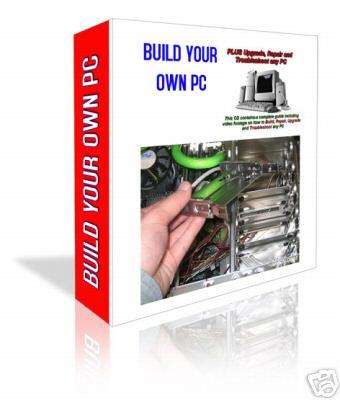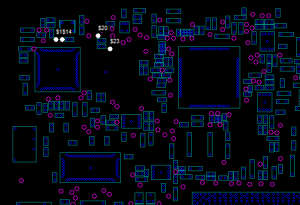
Laptop Motherboard Fault Finder
Check my rate
| Main centres: | 1-3 business days |
| Regional areas: | 3-4 business days |
| Remote areas: | 3-5 business days |

| Main centres: | 1-3 business days |
| Regional areas: | 3-4 business days |
| Remote areas: | 3-5 business days |

Please Note: This is an ebook in a downloadable pdf format no shipping is required. A download link will be sent to you after payment confirmation - Thanks
Component Level Motherboard Repair (Not Replacement)
Modern laptops are complex devices and motherboard failures are a common occurrence. Many motherboard problems are fixable, despite what some repair shops might say.
Common Motherboard Problems are indicated below:
1.No display, but power lights on (Mainly graphics card failure)
2.No display but laptop seems to sound like its powered up
3.Distorted display.
4.Laptop turns on for a few seconds and shuts down. (Fan may or may not spin)
5.Nothing at all happening when powered on.
The cause of these problems is normally onboard chips, which overheat and fail. The Nvidia graphics card chips, which are very common in laptops; are prone to failure. The chips are attached to the motherboards using a BGA (Ball Grid Array), which connect to the board underneath the chip.
Below are answers to most frequently ask questions from my personal laptop motherboard troubleshooting archives
See Samples Below
Problem:
How do you diagnose motherboards on a component level. What tools needed?
Solution: I find it is very hard to explain this. actually, it is very simple and can be described in two words: current and signal. read the current change during booting tells you where the machine stopped. check the signals on the different part of motherboard tells what is wrong or what may be missing.
Tools are: smd rework station, bga rework station, power supply with current meter. all the rest tools you can find in any radio tv repair shop. of course all the datasheets for the components, especially the schematic diagram, you will find it much difficult without it.
Problem:
What are common faults on motherboards?
Do certain components fail? Is there a trend as to which parts fail quite often?
Solution:
Different maker/model has different common fault. Toshiba S1 is vga chip, and can't be repaired(well, almost can't be repaired because the pcb quality is not very good so successful rate is very low).
HP DV2000, 6000, 9000, Compaq v3000, v6000, dell 1210, all those use nvidia chips have problem on vga chip or north bridge. easy to repair but have to make fan keep spinning after repaired, otherwise will break down in 1 or 2 week again.
hp nx5000, cpu pwm chip dry joint. acer 290, cpu pwm dry joint.
hp dv1000, Compaq m2000 protection circuit easy to blow up.
ibm t40 vga dry joint problem.
These are just few of them. every machine has its own common fault. but dry joint is the common problem for all machines. Motherboard repair is not as difficult as people thought, i think much easier than repair a tv.
Problem:
Dell 1525 Inspiron that does not recognize the installed battery this system will not charge the battery.
Solution:
Charging battery in Dell laptop involves two major chips: EC(or someone call it super IO), PWM chip for battery charging. BIOS has no part of charging. Battery communicate with EC through SMB(system management bus??) and EC controls charging PWM. Fix charging problem is very hard in laptop repair, you must fully understand schematics, where all the signals come from and where to go.
Today's laptops are less and less with programmed EC, Dell 1525 has no programmed EC so it can be replaced with same model.
Problem:
How i fix a DV6 with power problem. The problem of machine is it cannot power up at all.
Solution:
Doing routine check:
1. system power: 3V, 5V all presented - ok
2. NBSWON signal: 3.3V presented - ok
3. press power button, NBSWON pull down to 0V, ok
4. check DNBSWON while press power button, no response. - problem.
in here I made a mistake, I didn't pay attention of the voltage of DNBSWON, this mistake waste me the next few days time. It should be 3.3V, but only about 1V.
Change EC as usual, because I thought the EC has problem. Then the big trouble comes - it auto power up once I plug in the power but stop in 0.04A current. Check and find no S5_ON signal, which indicate south bridge has problem, so change south bridge. But still same problem and still no S5_ON. I find that the EC I change is kb3926A rather than kb3926C. In most case, this is no problem but in very rare occasion...
So I find a 3926C and put on. Now the motherboard is back to the same problem where I first start to check! So I change a wrong EC and this time I change a correct one, and also EC has no problem!
Because EC will start to read bios once the power plug in(not as people think, once you press power button). I check BIOS chip, BIOS_CS should have a continue wave form but it just one straight line. BIOS chip is faulty, I replace the BIOS chip and it works perfect.
5 steps to remove ic chips from the motherboard
1. Heat surface mount resistors, transistors, diodes, with a miniature hot air blower or heat gun for 60 seconds.
2. Pull the ic chip from the motherboard.
3. Clean the contact area using a solder flux mix place a small drop on the contact area.
4. Place the component on top and then reapply heat with your blower or heat gun.
5. Clean with alcohol....done.
Free Bonus


